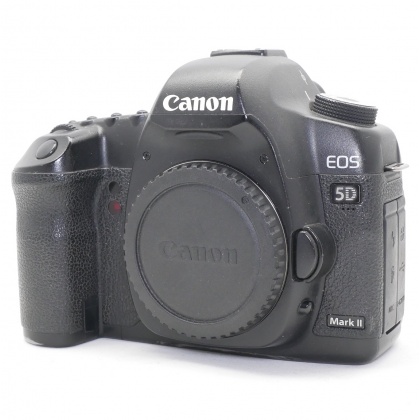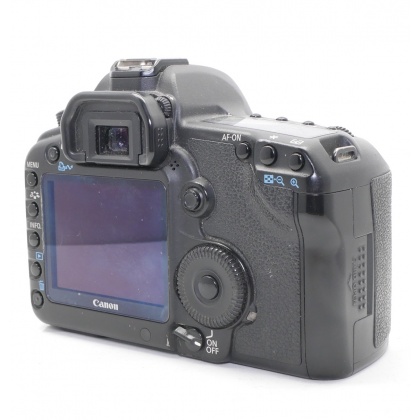Featured Products
What should I consider when buying a Used DSLR Camera?
The Famous Five SLR manufacturers were Canon, Minolta, Nikon, Olympus, Pentax. They all moved from film cameras to digital and the DSLR was born.
All but Olympus continued with their existing lens mounts producing digital SLRs in both the original 35mm format and smaller APS-C or 'crop-sensor' size.
Olympus, along with Kodak and Panasonic adopted the 4/3 standard roughly equivalent to a 35mm half-frame camera. ie 18x24mm instead of the full 24x36. If you are buying a half size camera you will need half size lenses to go with it.
Nikon SLRs have used the same Nikon F mount since their inception. A claw was added in the 1970s to engage with the aperture ring and control it automatically from the camera's exposure meter. Their have been a number of updates in latter years. Although any lens made by or for Nikon will fit any Nikon DSLR it may not provide all the features available on the later cameras.
Canon upgraded their mount on their original FL manual SLRs to FD lenses which have the same physical fitting but more features. Originally, all their lenses had a breech-lock fitting. The lenses dropped on to the camera body and were tightened with a rear ring. This confused some people and later FD lenses used a clever twist lock bayonet. One of the last FD lenses was a 35-70 zoom with an Autofocus module attached to one side of the lens. This was an indication of things to come. The FD fitting was dropped in 1987 with the launch of the Canon EOS 650 camera which was launched with a new range of EF, Elecro-Focus, lenses. The lens mount was slightly larger and the mechanical linkages used up to that time were replaced with electronic connections between the camera and servo motors in the lenses to control both the aperture and focus rings. In addition to being a Japanese God the word EOS also indicates an 'Electro Optical System'. It is a much superior to the old mechanical set up apart from an occasional failure to connect properly which can usually be cured by removing and replacing the lens a couple of times.
The best lenses in the Canon EF range have an L suffix and a red line around the lens barrel to indicate their superior performance.
Sony took over the Minolta SLR operation in 2013 and moved forward into translucent mirror technology with the Sony Alpha 68, offering fast shooting and quick and accurate focus across all shooting modes including live view. Whilst this camera was aimed at entry-level users, it offers features way above its original price point, ensuring excellent value for money. The later Sony Alpha 77 is amongst the most advanced cameras available at its time, featuring some ground breaking technology and a few 'world's first' titles as well. If you're looking to trade up or want to start with the most complete Sony DSLR cameras on the market then look no further. With the release of the Alpha 99, the worlds first 35mm full frame DSLT camera, followed by the Sony Alpha 99 MkII, you can now benefit from a full-frame sensor together with Sony's unique SLT features.
Olympus and Panasonic dropped their DSLRs after a few years and moved completely to mirrorless cameras using the same 4/3 sensor but a new 'Micro 4/3' lens mount to indicate the smaller size of the mirrorless camera bodies.










 In stock at Salisbury. Buy now or phone 01722 339909 and ask for Jim for more info, to reserve it or to arrange collection
In stock at Salisbury. Buy now or phone 01722 339909 and ask for Jim for more info, to reserve it or to arrange collection













 Sold this week. Please choose a similar item or contact us for an alternative
Sold this week. Please choose a similar item or contact us for an alternative











 Temporarily unavailable
Temporarily unavailable
























